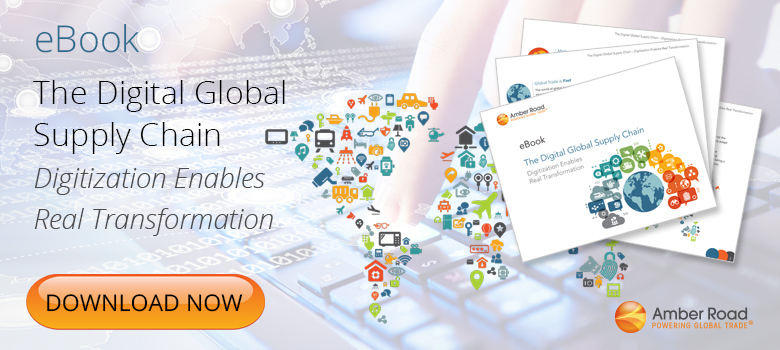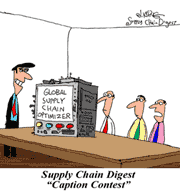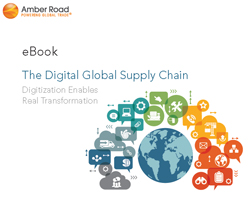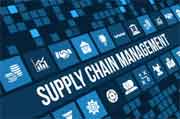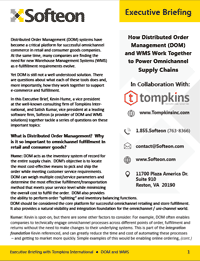Trip Report - CSCMP 2017 Part 2
After a week off to cover the 2017 MHI conference (See Trip Report: MHI 2017), I am back with more summary of the CSCMP 2017 annual conference (now called CSCMP Edge) in Atlanta two week ago, starting my coverage of breakout sessions after first covering main stage and keynote presentations in part 1 (see Trip Report - CSCMP 2017).
Before starting that, I will summarize a few other happenings at the conference I didn't have room for in part 1, just to quickly get everyone up to speed with CSCMP action.
Dr. Nancy Nix received CSCMP's Distinguished Service Award, after a long and still active career in industry (Dupont, others) and academia (Texas Christian University). She noted in her brief comments that as professionals we need to say Yes more often in terms of taking some career risks and getting involved with the industry, as for her at least saying Yes has almost always paid off, even if in some cases in unexpected ways. Good advice.
| GILMORE SAYS: |
So whether the proposed solution to unlocking all these profits was something IBP-like or not we just never got around to discussing in the session.
WHAT DO YOU SAY?
Send us your
Feedback here
|
The winner of the supply chain innovation award among the six finalists was TransCelerate, which is some kind of health care network that implemented new tools to improve the clinical trial process for member medical companies. The runner up was UK retailer Argos, which transformed its supply chain network to address new ecommerce order fulfillment challenges.
I will note that in the past the nominee that did something with Greening the supply chain often won the award. There interestingly wasn't a Green finalist this year, but TransCelerate was clearly the closest to "we did a good thing" entrant, so I am not surprised it won.
I went to just one of these innovation track presentations, on Vodafone's excellent use of a new tool that enabled it to perform some incredible analytics on its procurement process that I will summarize next week. I was also interested - though did not attend - the entry from Whirlpool on how it changed the product flow path for slow moving SKUs that increased inventory efficiency and improved customer service.
Taking over from Mary Long as the 2017-2018 CSCMP board chair is a man named Remko van Hoek. I must confess I have never heard of him, but turns out he has been on the board a long time, 13 years. He is affiliated with the UK's Cranfield University, and has been in the corporate world as well. He came across as very smart and focused, and has goals of increasingly CSCMP membership value, boosting the number of volunteers, and bulking up CSCMP leadership ranks. It's tough though, I think, for board chairs to have a big impact in just a one year term.
Did you know CSCMP ran again this year a "round table challenge," in which local councils compete over the course of many months as teams in some kind of business simulation game? The winner this year in the second such contest was the Arizona roundtable. Sounds like something that might be fun to get involved with this coming year, assuming the challenge is repeated. There isn't much info on the main CSCMP site yet, so I would check with your local roundtable.
With that news, the third day of CSCMP is always a short one, and as usual started with a choice of three 1 hour and 15 minutes "megasessions," followed by a mid-morning brunch, some awards and CSCMP news, and then usually a motivational speaker of some sort to wrap up the conference.
There was a megasession on innovation in supply chain from the AWESOME organization, which promotes and supports women in supply chain, and another titled "Disrupt or be Disrupted," but I opted for a third one that to me sounded the most intriguing, titled "Discovering Hidden Profit through Advanced Supply chain Decision Making" - that was provocative enough - with a description that promised a "thoughtful and actionable methodology to extracting hidden profit by connecting people and business processes."
Well that sure would be something good to know, wouldn't it?
The session was led by Robert Marchenko of LeanCor, who is a smart guy, Lean expert and recent CSCMP DSA winner, and Dr. Thomas Goldsby, now at Ohio State, both of whom I know a bit.
So I had high expectations but ultimately the result was frustrating even after a very promising start, and unfortunately that is because we never got to any real meat - the how to do this. And that was largely because Martechenko and Goldsby were so focused on making the presentation interactive, throwing a number of questions out to the audience, and recording the responses on video for some other purpose - that they got way behind in the presentation and didn't come close to covering all the material.
It started very strong. Martechenko said that in every company there are four key processes: (1) business strategy development, (2) product lifecycle management - which has to do with the product portfolio, new product development, etc. - (3) sales and marketing, and (4) supply chain operations.
Martechenko said most companies were leaving significant dollars on the table because of a failure to well connect those key processes. And he really does mean significant, saying that costs could be reduced as much as 30-40% from achieving this integration.
And I really liked how Martechenko framed this up, saying these big increases in profits are really a company's right, and can be achieved without developing a bunch of new products or acquiring new customers - they are there for the taking, you just need to connect those four processes in more impactful ways. |
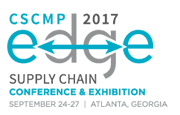 Well that kind of fired me up, and confirmed to me I had made the right megasession choice. There were some other good observations early on. For example, how it's the unattended consequences of decisions across the business that often lead to supply chain problems and challenges. Well that kind of fired me up, and confirmed to me I had made the right megasession choice. There were some other good observations early on. For example, how it's the unattended consequences of decisions across the business that often lead to supply chain problems and challenges.
And I liked this too: the waste and cost that come as a result of business decisions in any of the other three core processes or lack of integration always manifest themselves in the end as supply chain cost or service issues. I think that is a useful observation, and will probably use it myself down the road, with attribution.
So why don't we connect these processes? "Bias" of some kind was cited as a key factor - different groups have different biases in decision making. But how that prevents connecting the processes was never made clear - and then suddenly we were out time. Session over. So I don't know what the secret is to unlocking all these profits though better connecting these four processes, or as promised the methodology for extracting those hidden profits.
Afterwards, I noted to Martechenko that we have an existing process called integrated business planning (IBP) that is designed specifically to connect key business processes, tying supply and demand planning in the end to the financial statements. He said IBP was about planning and didn't do enough to connect back to what then actually happens - though of course in my view best organizations have such feedback loops.
So whether the proposed solution to unlocking all these profits was something IBP-like or not we just never got around to discussing in the session.
Harking back to Pixar's Mathew Luhn on the classic story telling model he presented in a keynote address on Monday, this presentation had a truly great set up, a pretty good build stage that that ended prematurely, and no payoff phase. Too bad. Maybe I can learn the rest of the story some other way. I remain very interested - and will tell it in this column if I get a chance. For all I know, if completed this might have been a "presentation of the year" candidate.
Milking the conference for columns as much as I can, next week I will cover other breakout sessions, including the aforementioned and impressive presentation from Vodafone and Celonis on a procurement process analytic tool, two presentations on use of blockchain in the supply chain, including an outstanding one from Schneider Electric, our own Mike Watson and colleagues on building a supply chain analytics center of excellence, and research from CH Robinson and MIT on whether multi-stop truckload shipments have much impact on cost or service.
Until then….
Did you go to CSCMP 2017? If not, why not? If yes, what are your thoughts on the conference? Let us know your thoughts at the Feedback button below.
|



![]()

![]()

![]()

